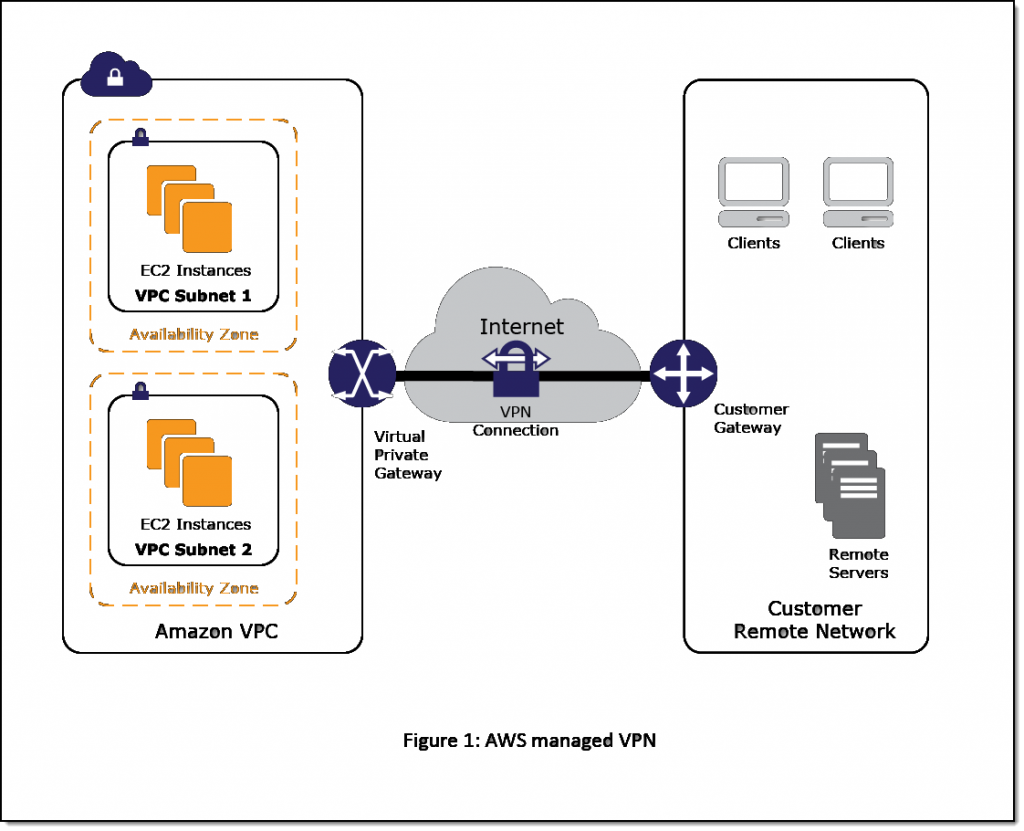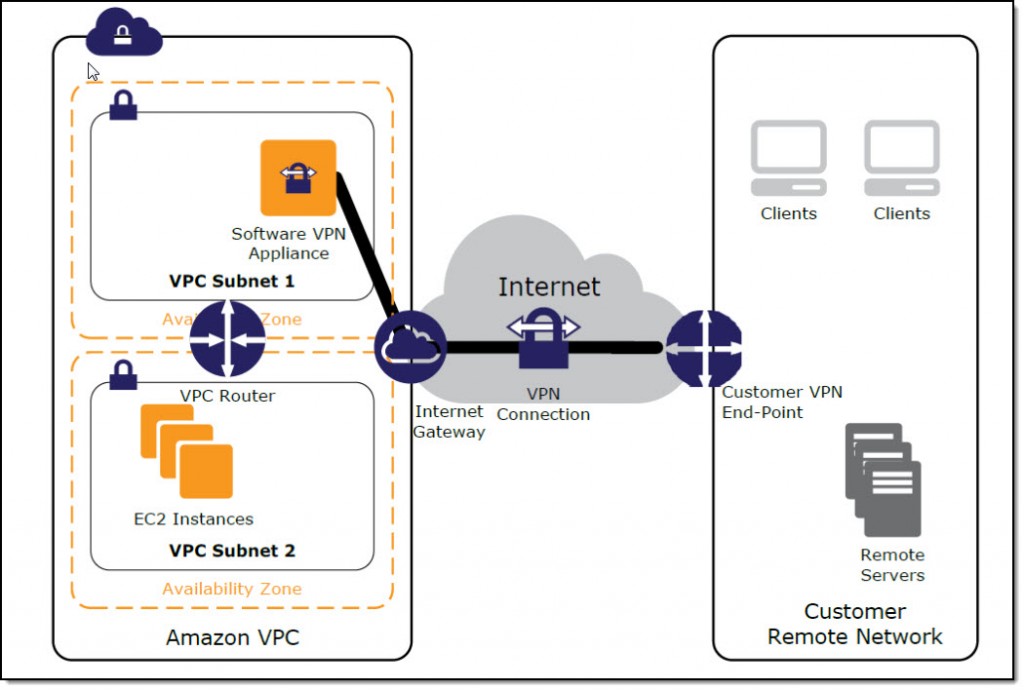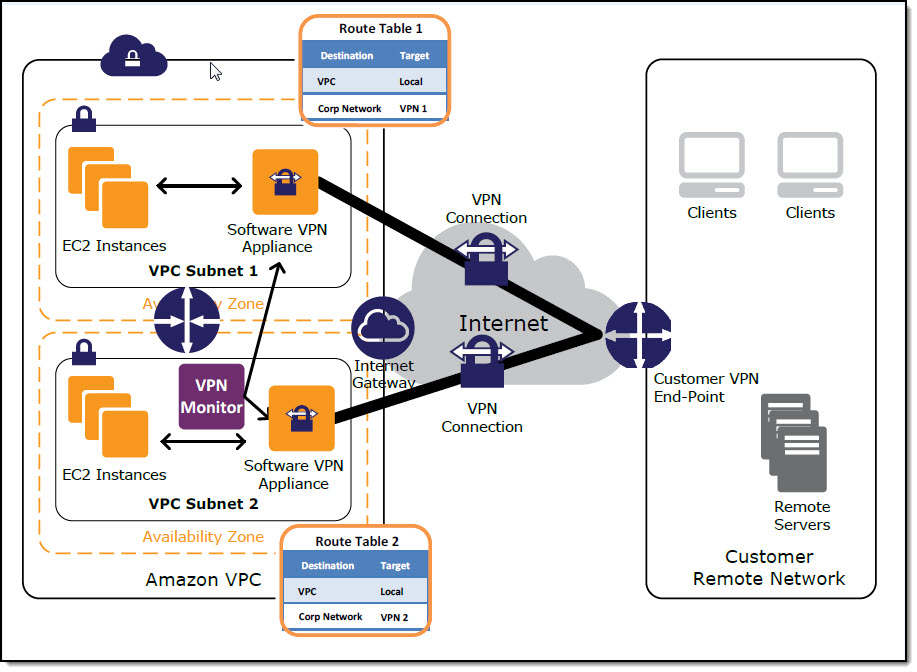AWS News Blog
User Network-to-Amazon VPC Connectivity for Applications Hosted on AWS
|
|
With so much going on at AWS, we often hear from readers asking for ways to help them make more informed decisions, or put together examples for their planning processes. Joining us today is Jim Carroll, a Sr. Category Leader with Amazon Marketplace to talk about AWS Networking services and solutions in the AWS Marketplace.
-Ana
Last month we announced the new AWS Region in London. This new region expands our global infrastructure and provides our partners and customers with even more geographic options to cost-effectively scale and meet compliance and data residency requirements. This announcement is fresh in my mind because of conversations I’ve had recently with our customers about the AWS networking services and solutions in AWS Marketplace that they leverage to connect their corporate network to their virtual private network on the AWS Cloud.
Customers typically deploy this architecture with AWS in order to support one or a combination of business needs:
- Migrate applications to the AWS Cloud over time
- Quickly and cost-effectively scale their network for branch office and remote connectivity, improving end user experience while migrating applications to the AWS Cloud
- Ensure compliance and data residency requirements are met
Today, I will overview the VPN options available to customers with these business needs, to help simplify their decision-making. With Amazon VPC, you can configure an AWS managed VPN, use private circuit connectivity with AWS Direct Connect, and enable third-party networking software on your VPC for VPN connectivity. You may also choose a client-to-site VPN that allows users to directly access AWS from their desktop or mobile devices.
Steve Morad’s 2014 whitepaper, Amazon Virtual Private Cloud Connectivity Options, provides an overview of the remote network-to-Amazon VPC connectivity options. The table below summarizes these insights, followed by considerations for selecting an AWS managed VPN or a user-managed software VPN end-point in your virtual network on AWS. This discussion contains information from Morad’s whitepaper.
| User Network–to–Amazon VPC Connectivity Options | |
| AWS Managed VPN | IPsec VPN connection over the Internet |
| AWS Direct Connect | Dedicated network connection over private lines |
| AWS Direct Connect + VPN | IPsec VPN connection over private lines |
| AWS VPN CloudHub | Connect remote branch offices in a hub-and-spoke model for primary or backup connectivity |
| Software VPN | Software appliance-based VPN connection over the Internet |
AWS Managed VPN
This approach enables you to take advantage of an AWS-managed VPN endpoint that includes automated multi–data center redundancy and failover built into the AWS side of the VPN connection. Both dynamic and static routing options are provided to give you flexibility in your routing configuration. Figure 1 illustrates.

AWS managed VPN considerations:
- Although not shown, the Amazon virtual private gateway represents two distinct VPN endpoints, physically located in separate data centers to increase the availability of your VPN connection.
- Both dynamic and static routing options are provided to give you flexibility in your routing configuration.
- Dynamic routing leverages Border Gateway Protocol (BGP) peering to exchange routing information between AWS and these remote endpoints.
- With dynamic routing, you can also specify routing priorities, policies, and weights (metrics) in your BGP advertisements and influence the path between your network(s) and AWS.
- When using dynamic routing, routes advertised via BGP can be propagated into selected routing tables, making it easier to advertise new routes to AWS.
Software VPN
This option utilizes a software VPN appliance that runs on a single Amazon EC2 instance connecting to your remote network. This option requires that you manage both sides of your Amazon VPC connectivity, including managing the software appliance, configuration, patches, and upgrades.

This option is recommended if you must manage both ends of the VPN connection. Considerations:
- Compliance: You may need to use this approach for compliance and data residency requirements in your hybrid network architecture. IT security and privacy regulations govern specific industries and require your IT infrastructure, including your network, to meet certain government standards.
- Gateway device support: Customers with gateway devices that are not currently supported by the Amazon managed VPN solution, choose to deploy a Software VPN in order to leverage existing on-premises investments. The list of supported gateway devices is located here.
- Networking infrastructure solutions in AWS Marketplace: You can easily extend your on-premises networking infrastructure software with pre-configured and customizable AMIs from popular software vendors on AWS Marketplace.
Example of HA Architecture for Software VPN Instances
Creating a fully resilient VPC connection for software VPN instances requires the setup and configuration of multiple VPN instances and a monitoring instance to track the health of the VPN connections.

Figure 3: High-Level HA Design
We recommend configuring your VPC route tables to leverage all VPN instances simultaneously by directing traffic from all of the subnets in one Availability Zone through its respective VPN instances in the same Availability Zone. Each VPN instance will then provide VPN connectivity for instances that share the same Availability Zone. The white paper provides more information and considerations.
By leveraging networking infrastructure solutions from popular vendors such as Brocade and Cisco in AWS Marketplace, you can take full advantage of existing investments in on-premises systems and thecloud to meet your unique business challenges.
-Jim Carroll
